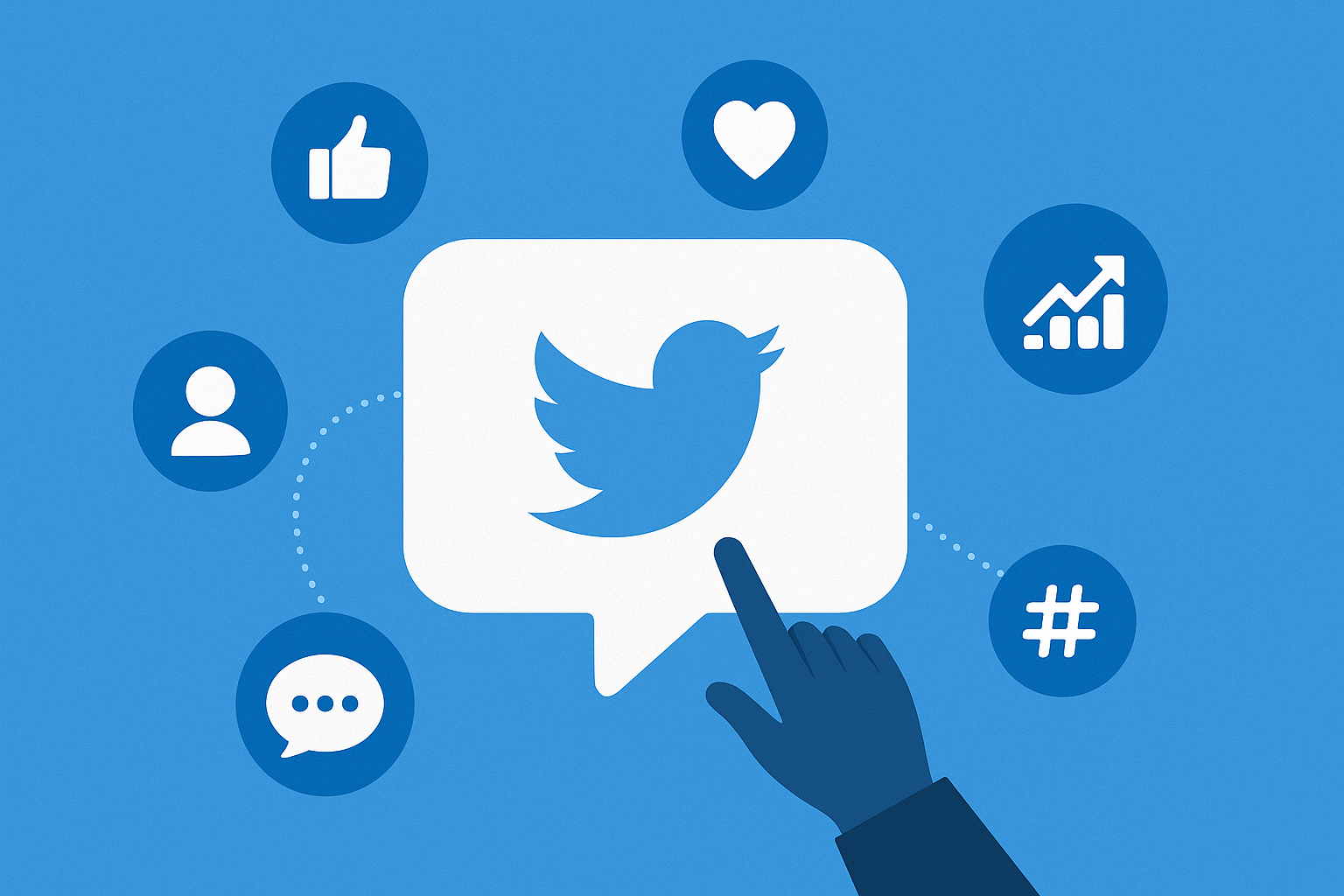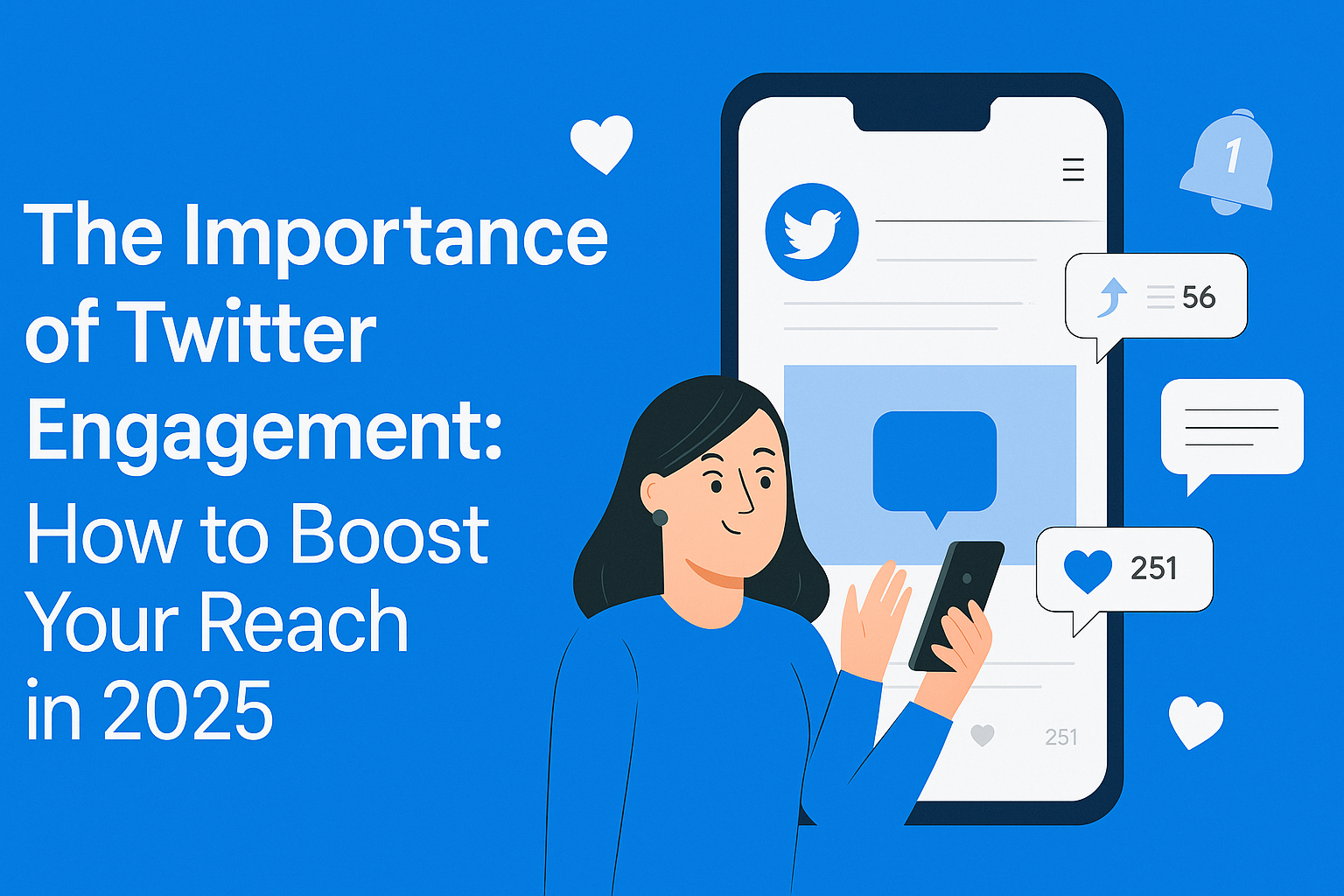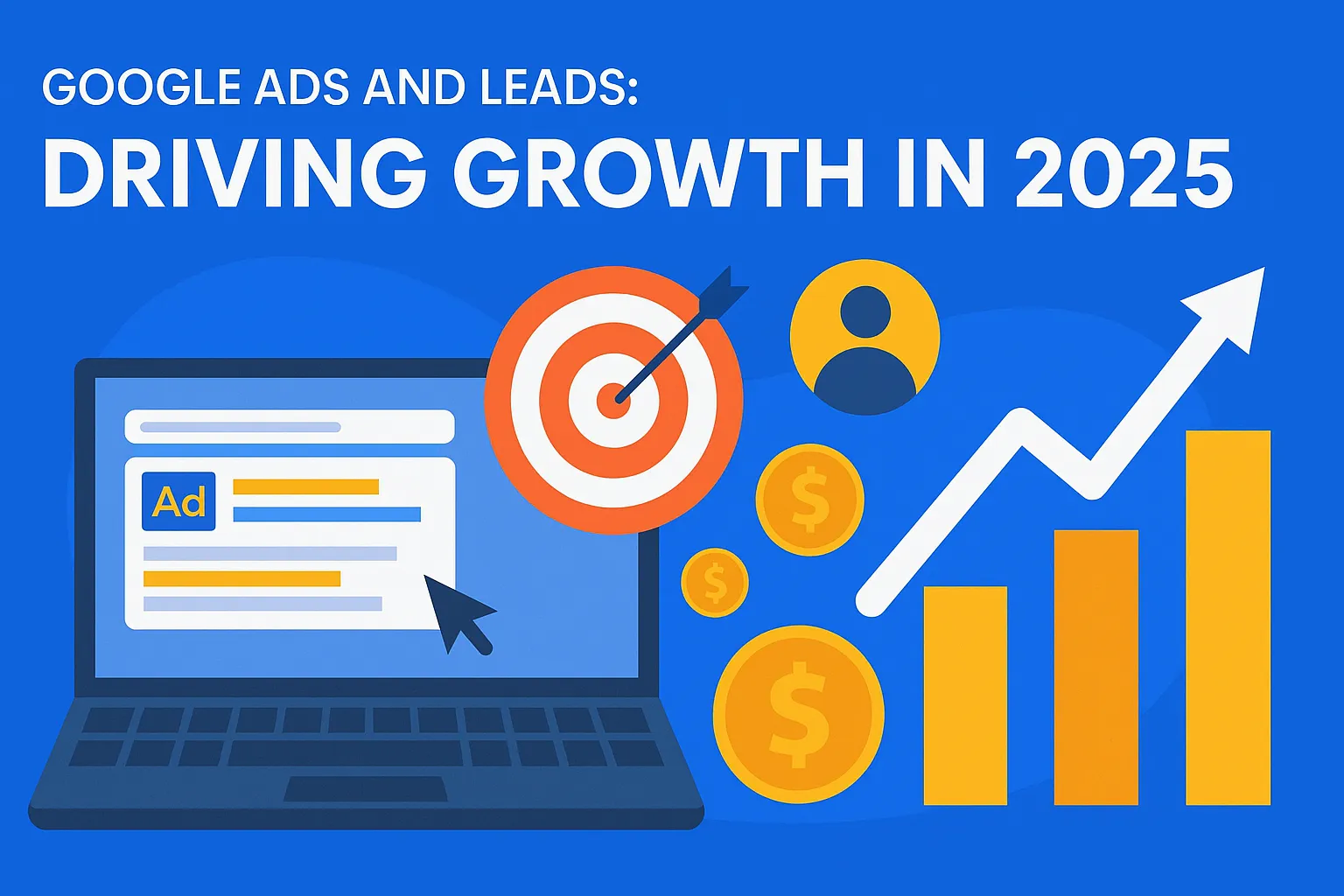Twitter (now X) continues to be one of the most powerful platforms for businesses and individuals aiming to expand their digital presence. With millions of tweets posted every minute, cutting through the noise is challenging. That’s why having a strong Twitter engagement strategy 2025 is essential to stand out, build visibility, and connect with the right audience.
Engagement goes beyond vanity metrics — it represents how well your content resonates with your audience. By building meaningful connections through likes, retweets, comments, and mentions, you can amplify reach, strengthen relationships, and grow a loyal following.
This blog explores why Twitter engagement is important, how the algorithm works, and actionable tips to improve your Twitter strategy in 2025.
What Does Engagement Mean on Twitter? Understanding Twitter Engagement Strategy 2025?
Engagement refers to all the ways users interact with your content, including:
- Likes
- Retweets
- Comments/Replies
- Mentions
- Shares
The more engagement your tweets receive, the more likely they are to appear in timelines beyond your immediate followers. This helps you reach new users and build brand visibility.
Why Twitter Engagement Matters
- Stronger Brand Visibility: Engagement increases chances of being discovered by non-followers.
- Better Relationships: Replying to mentions and comments shows you value your community.
- Customer Loyalty: Active interactions can lead to higher retention and sales.
- Valuable Insights: Analytics help you understand what content resonates most with your audience.

What’s a Good Engagement Rate on Twitter?
A healthy engagement rate typically falls between 1% to 3%. To calculate it:
Engagement Rate = (Total Engagements ÷ Total Impressions) × 100
Example: If a tweet receives 5 engagements and 100 impressions, your engagement rate is 5%.
While engagement rate is crucial, also track click-through rate, conversion rate, and follower growth to measure campaign success.
Understanding the Twitter Algorithm
Twitter’s algorithm focuses on three key factors:
- Relevance: Tweets aligned with user interests or past interactions appear higher.
- Recency: Fresh content is prioritized over older posts.
- Engagement Levels: Tweets with higher interactions (likes, retweets, comments) get boosted.
For some users, timelines are chronological, while others see algorithm-curated feeds. Popular tweets from outside your network may also surface based on engagement.
Tips to Increase Twitter Engagement
- Use Visual Content
- Tweets with images, GIFs, or videos receive significantly higher interaction rates.
- Keep Tweets Concise
- Posts with 71–100 characters perform best, making them easier to read and share.
- Leverage Hashtags
- Add 1–2 relevant hashtags to improve discoverability, but avoid spamming.
- Engage With Followers
- Reply to mentions, retweet valuable content, and participate in trending discussions.
- Post at the Right Time
- Schedule tweets when your audience is most active to maximize visibility.
- Experiment With Content Types
- Polls, questions, and news updates can spark conversations and attract new followers.
- Use Analytics to Improve
- Review Twitter Analytics to identify patterns and refine your content strategy.
Table of Contents
Crafting Engaging Tweets: Best Practices
- Visuals First: Incorporate eye-catching images or videos.
- Strong Copy: Keep text short, impactful, and authentic.
- Clear CTA: Encourage users to act (reply, click, retweet).
- Smart Hashtags: Use relevant tags without overloading your tweet.
- Provide Value: Share insights, news, or tips your audience finds useful.
Final Thoughts
In 2025, Twitter engagement remains a cornerstone of digital marketing success. By creating engaging content, actively interacting with your audience, and leveraging analytics, businesses and individuals can increase visibility, strengthen communities, and achieve measurable growth.



